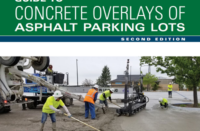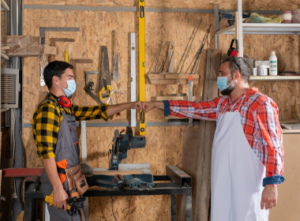 Environmental Hazard Monitoring Expert Casella Announces Casella 2022 Webinar Series on Noise, Air Sampling and Vibration
Environmental Hazard Monitoring Expert Casella Announces Casella 2022 Webinar Series on Noise, Air Sampling and Vibration
Global occupational health and workplace hazard monitoring expert Casella has announced its schedule of industry-leading webinars for 2022.
The schedule of free-to-attend, accessible webinars covers Casella’s areas of core knowledge, including workplace monitoring for noise, dust, gas and vapor hazards, as well as instrumentation usage and best practice.
In order to reach worldwide attendees, two sessions will be run on each date. One will take place at 10 a.m. and a later session at 3 p.m. to ensure learners across multiple time zones can benefit. Each webinar will also conclude with a Q&A session to recap.
The Casella 2022 Webinar Series schedule is set to run as follows:
23rd February – Environmental Boundary Monitoring in Construction: Understanding Data
Parameters and data can be intimidating to those unfamiliar with environmental monitoring. This session will provide expert guidance on key parameters for noise, particulate and vibration so that site managers can know their Leq from their PM10 and PPV. Casella will also advise on how to use data to prevent potential complaints, saving site time and costs.
16th March – Introduction to Air Sampling
Airborne hazards from fibers, gases, dust and vapors can all cause potentially life-threatening damage to worker health. This session will provide expert insights on monitoring workers’ exposure with guidance on equipment, current requirements and best practice techniques.
13th April – Introduction to Noise at Work
This session will cover the different international workplace noise regulations. It will offer guidance on employer responsibilities. Additionally, it will explore ways that the use of noise dosimeters and sound level meters can support compliance.
18th May – Introduction to Asbestos Sampling
This session will provide a quick insight into the international use of asbestos, both now and historically, its associated health risks and how to perform air sampling for asbestos. Attendees will be guided through the equipment and accessories needed with best practice advice on how to set up equipment.
8th June – Setting up Air Sampling Pumps
Setting up air sampling pumps and their associated items is paramount to ensuring accurate exposure data. This webinar covers selecting the correct pump, setting up a ‘sample train’ and ensuring accurate flow, as well as best practice to ensure good quality data.
6th July – Introduction to HAV Monitoring
Hand Arm Vibration Syndrome (HAVS) is a serious condition that can be prevented with the correct control of exposure. This webinar reviews the terminology around HAV measurement. It also reviews legislation and exposure limits. Additionally, it touches on how to measure exposure on tools correctly and subsequently calculate exposure levels.
24th August – Environmental Boundary Monitoring in Construction: Best Practice
Boundary monitors can measure dust, noise, ground vibration and wind parameters. Acquiring accurate measurements from these units is essential for reporting quality data and preventing environmental complaints. This session will cover the correct siting and installation of monitoring units to ensure compliance with guidance and legislation. In addition, attendees will gain a best practice understanding of sensor operation and maintenance.
14th September – Introduction to Dust Sampling
This webinar will guide attendees through different facets of dust monitoring using air sampling pumps. These include types of dust to measure and the selection of equipment, such as sampling heads or filters. Additionally, the webinar will cover how to calculate airborne concentration and exposure.
19th October – Use of SLM’s and Noise Dosimeters
This session will guide attendees through the applications and uses of noise dosimeters and sound level meters. It will also discuss the pros and cons of each. This webinar will also provide a best practice guide to getting the most from noise monitoring equipment, and cover the critical dos and don’ts of instrumentation.
24th November – Introduction to Sampling Gases and Vapors
Personal sampling of vapors and gases requires knowledge to select the correct sampling media and the right accessories and flow rates. This webinar covers sources of information, how to set up a ‘sample train’, and how to select the correct air-sampling pump and equipment calibration.
To find out more about Casella’s industry-leading range of monitoring solutions, please visit www.casellasolutions.com
About Casella
Casella is dedicated to reducing environmental and occupational health risks. They aim to do this by developing equipment and technology for dust, noise and vibration monitoring.
Casella’s core purpose is to create technology aimed at improving the working environment of employees. They do this while providing robust data and equipment platforms to enable organizations to remain compliant with health and safety regulations. The company is an expert in the integration of sensor technology and data management systems that further improve productivity and overall safety in the workplace. Casella’s range of instrumentation includes real-time dust monitors, personal sampling pumps, sound level meters, personal dosimeters, hand-arm vibration and boundary/fence-line monitors. Casella is a global business, part of the IDEAL Industries Inc. group of companies, with offices in the UK, US, Australia, China and India.
The company has provided precision instrumentation since 1799 and supplied eminent figures, including Charles Darwin, with instrumentation for exploration and scientific work. Casella works with a network of specialist distributors to provide local service and client support to those searching out solutions for risk reduction and management.














